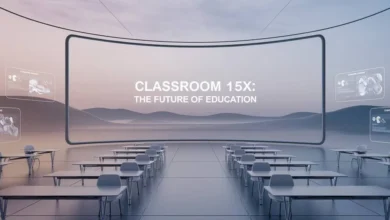In an era dominated by rapid technological advancement and urban innovation, a new concept emerges that challenges the boundaries of conventional thinking—Simpcitt. Though the term might initially sound enigmatic or unfamiliar, its implications span across multiple domains, from smart city infrastructure to artificial intelligence, cognitive modeling, and digital simulation. In this article, we’ll break down what Simpcitt could represent, explore its transformative applications, and uncover the challenges and research directions tied to its potential.
What is Simpcitt? A Conceptual Deep Dive
At its core, Simpcitt appears to be a fusion of two ideas—“simplicity” and “city” or “cognition.” While not yet officially defined in dictionaries or academic literature, the speculative deconstruction of Simpcitt provides valuable insight into its possible meanings.
- Simp may denote simplicity, simulation, or a stripped-down version of something complex.
- Citt might derive from “city,” “circuit,” or even the Sanskrit “chitta,” meaning mind or consciousness.
Hence, Simpcitt might represent a Simplified City, a Simulated Intelligence System, or a System for Integrated Management and Planning in Cities with Technology. However, no matter the interpretation, the heart of Simpcitt lies in harnessing the power of technology to understand, replicate, or improve complex systems.
Simpcitt as a Digital Urban Blueprint
One of the most tangible applications of Simpcitt is as a digitally simulated urban environment. This version of Simpcitt can be instrumental for:
- Urban Planners: Testing infrastructure changes, zoning laws, or transportation policies.
- Governments: Creating sustainable, low-emission smart cities.
- Architects and Engineers: Understanding the spatial relationship between structures, roads, utilities, and people.
By creating a digital twin of a city, Simpcitt could function as a real-time model that mirrors the city’s pulse—capturing traffic, energy use, population flow, and more.
Cognitive Simpcitt: Simplified Models of Human Thought
Another dimension of Simpcitt involves cognitive science and artificial intelligence. Here, the concept shifts from a geographical simulation to a mental framework—a digital interpretation of how humans think, decide, and react.
This version of Simpcitt offers value in:
- AI Development: Mimicking human cognition to train intelligent agents.
- Behavioral Analysis: Predicting consumer decisions, social dynamics, and emotional responses.
- Neuroscience: Creating experimental models for studying brain functions without invasive procedures.
Through simplified cognitive simulations, Simpcitt could serve as a revolutionary approach to understanding human consciousness, decision-making, and learning behavior.
Simpcitt in Disaster Simulation and Emergency Response
In disaster-prone regions, the ability to simulate potential threats can be life-saving. Simpcitt can be a predictive tool in such scenarios.
Imagine using Simpcitt to:
- Model Earthquakes or Floods: Evaluate how an area would be affected.
- Train Emergency Teams: Offer real-time crisis simulations for better preparedness.
- Plan Evacuation Routes: Based on dynamic population data and traffic patterns.
With the inclusion of weather data, topography, and infrastructure details, Simpcitt could evolve into a sophisticated risk mitigation platform.
Enhancing Logistics and Transportation Systems with Simpcitt
Logistics and transport sectors are undergoing a digital transformation—and Simpcitt could play a pivotal role in that evolution.
Here’s how Simpcitt supports smart logistics:
- Optimizing Routes: Simulated environments help reduce delivery times and fuel costs.
- Traffic Flow Analysis: Identifying congestion patterns and implementing AI-driven traffic controls.
- Smart Mobility: Supporting autonomous vehicle testing in virtual city models.
The result? Faster delivery, less congestion, and better commuter experiences—all thanks to the modeling power of Simpcitt.
Simpcitt for Education and Virtual Learning Environments
Learning in a digital world demands engaging and immersive tools. Enter Simpcitt as a pedagogical platform.
From high school students to university researchers, everyone can benefit from:
- Hands-on Simulations: For urban planning, resource management, and civic engineering.
- Interactive Learning: Where students make decisions and see the real-time outcomes.
- Cross-Disciplinary Training: Combining computer science, sociology, architecture, and business.
The gamification of education using Simpcitt can bridge the gap between theory and real-world application.
Challenges in Building and Deploying Simpcitt
As promising as Simpcitt is, its implementation isn’t without hurdles. Some of the pressing challenges include:
1. Data Integrity and Availability
Accurate simulation depends heavily on real-time, high-quality data. Any errors in input can drastically skew predictions.
2. Computational Resources
Running a high-fidelity Simpcitt model can demand immense processing power, especially when scaling simulations across entire cities.
3. Ethical and Privacy Issues
Models that track human behavior or city activity must prioritize privacy, ensuring sensitive data is anonymized and securely stored.
4. Standardization and Interoperability
To build a cohesive Simpcitt ecosystem, standardized protocols for data sharing and model integration are essential.
5. Accessibility for Non-Tech Users
Even the most advanced Simpcitt model is ineffective if users—like urban planners or government officials—find it too complex to navigate. Usability must remain a priority.
Exploring the Future of Simpcitt: Research and Innovation
The future of Simpcitt is tied to the direction of several critical research domains:
- Smart Grids and Infrastructure: Combining Simpcitt with energy systems to distribute electricity as efficiently as possible.
- IoT and Sensor Networks: Feeding real-time data into the simulation to keep it current and adaptive.
- Behavioral Simulation: Studying group dynamics in controlled environments using virtual agents.
- AI Ethics and Governance: Building transparent and fair AI models within Simpcitt.
- Global Collaboration: Shared urban models across nations to collectively tackle climate change, pandemics, and migration crises.
As academic institutions, private tech companies, and governments invest more in simulation technology, Simpcitt is likely to grow from concept to critical infrastructure.
FAQs:
What does Simpcitt mean?
Simpcitt is a conceptual term blending “simplicity” or “simulation” with “city” or “consciousness.” It may refer to simplified digital models of cities or cognitive systems used in urban planning, AI development, or education.
Is Simpcitt a real software or just a theory?
As of now, Simpcitt is more of a conceptual framework rather than a specific commercial tool. However, its principles align closely with existing technologies in smart cities, AI, and digital twins.
How can Simpcitt be used in smart cities?
Simpcitt can help simulate and optimize traffic flow, infrastructure planning, energy distribution, and emergency response in urban areas.
Can Simpcitt improve disaster response?
Yes. Simpcitt can create predictive disaster models to test scenarios, plan evacuation routes, and train responders before a real disaster strikes.
What industries benefit from Simpcitt?
Industries like urban development, transportation, logistics, education, healthcare, and artificial intelligence stand to gain from Simpcitt’s simulation capabilities.
Conclusion:
Simpcitt represents more than just a buzzword—it symbolizes a paradigm shift in how we model, understand, and optimize complex systems. Whether it’s cities, human cognition, or disaster response mechanisms, the power of simplified, data-driven simulations could unlock better decision-making, cost-saving efficiencies, and smarter environments.
In a world teeming with complexity, Simpcitt offers a chance to bring clarity, foresight, and actionable insights. As research continues and technology matures, embracing Simpcitt might be the next critical step toward building the intelligent, responsive systems of tomorrow.
Keep an eye for more latest news & updates on Tricks Magazines.com!





